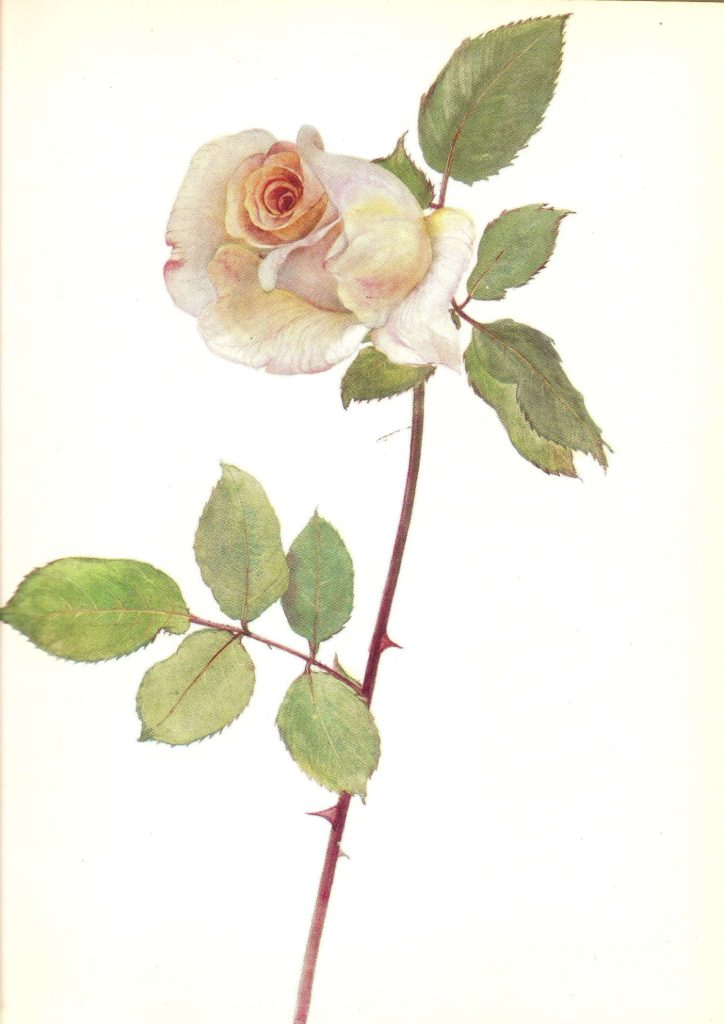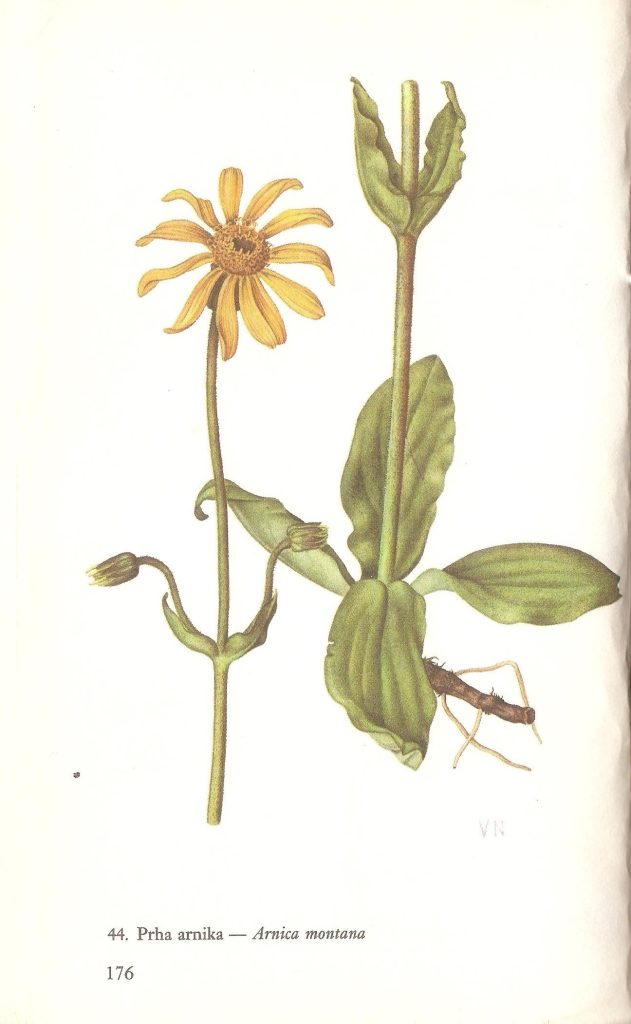The plant, charming with its different morphology and the colourful charm of its flowers, has always served as an object suitable for artistic representation. As the knowledge of the usefulness and medicinal effects of individual plants developed, the need to capture their form as faithfully as possible so that they could be found in nature according to these depictions grew.
In order for scientific illustration, or a scientific botanical illustration, to achieve its goal, i.e. to acquaint the viewer with the facts of science, its author should suppress in his artistic expression the subjective approach to the representation of a given scientific model. Based on a detailed examination of botanical depictions by the most important Czech botanical illustrators working during the 20th century, it can be concluded that the uniqueness and high quality of Czech botanical illustration is paradoxically based on the distinctive illustrative expressions of individual artistic personalities, which the Czech aesthetician and art theorist Dušan Šindelář groups under the unofficial term Czech Botanical School of Illustrators.[1]

The original Czech botanical illustration by Adolf Kašpar can be seen in František Polívka’s four-volume work Illustrative Flora of the Lands of the Czech Crown, published between 1899 and 1904. It should be noted that the originality of Kašpar’s illustrative accompaniment was a notable exception in the production of the time; it was more common to supplement Czech botanical works with pictorial appendices taken from proven German models [1].[2]
A great impulse for the Czech production of botanical illustration to move away from German models was the first publication of Josef Mánes’ botanical study drawings in 1940. Mánes depicted plants sensitively and factually, his pen drawings are dynamic and characterized by the use of shape abbreviations [2].[3]
The botanical illustrations of Karel Svolinský are considered to be the legacy of Josef Mánes’ botanical drawings. The collaboration between this artist and the botanist František Antonín Novák resulted in three volumes of botanical keys, Plants 1 (1935), Mountain Plants (1937) and Plants 2 (1940) [3].
Anna Kavinová-Schustlerová created her botanical illustrations on the basis of sensitive observation and a light, glaze-like handling of colour, while František Procházka, on the other hand, used pen drawing to record plants with scientific accuracy. František Severa mastered the technique of watercolour in his botanical illustrations, and in the field of natural history drawing he is considered the successor of such artists as Václav Hollar, Antonín Navrátil, Josef Mánes and Karel Svolinský. His deep, richly coloured images have an almost magical effect [4].[5]
Jiřina Kaplicka’s illustrations of roses, cacti and flowering shrubs are objective and monumental. Kaplická crosses the boundaries of scientific illustration and her botanical depictions thus show features of a freer artistic creation. Particularly in the author’s illustrations of roses, one can notice her bravura handling of coloured watercolour valers, which she uses to sensitively distinguish the transparency of the flowers and their shiny or velvety matt surface interwoven with fine veining from the rich green of the stems and leaves [5].[6]
Similarly to the work of Jiřina Kaplicka, Ludmila Jiřincová’s botanical depictions are on the borderline between scientific and poetic, free illustration [6].[7]
Otto Ušák’s illustrations [7],[8] based on seemingly rough, generous brushstrokes, but with an atmospherically sparkling colouring, are contrasting. Otakar Zejbrlík concentrated in his pen drawings on the exact expression of plant structure. Květoslav Hísek, Karel Svolinský’s successor, on the other hand, approached his work with colour with delicacy, and he also handled his drawings with sensitive care [8].Věra Ničová-Urbanová and Ladislav Urban managed to reconcile the thin drawing, which records the striations of the surface, with a painterly detailed expression in their depictions [9 ].[10]

Jindřich Krejča found a balance between drawing and colour and complemented the depiction with pen-drawn details telling about the character of the plant. Vojtěch Štolfa complemented the pen drawing with an energetic hatch [10].[11] Zdenka Krejčová, following the example of her teacher Karel Svolinský, emphasized linear drawing, filled with expressive watercolours. Anna Skoumalová-Hadačová and Jarmila Haldová demonstrated their unique observation skills and their ability to translate complicated structures into pen and ink drawings and make them understandable for a wide range of viewers.
Academic painter Zdeněk Sklenář taught scientific illustration in his studio at the Academy of Fine Arts in Prague during the 1970s and 1980s The work of Sklenář’s graduates, including Pavel Dvorský, Eva Hašková and Petr Melan, is similar to each other in terms of fine execution and high professional sophistication.
So as we can see, for domestic authors of botanical illustration of the 20th century, creative variability is typical. However, this in no way has a negative impact on the factuality and the resulting cognitive function of the resulting botanical illustrations.
At the end of our short introduction to the phenomenon of Czech botanical illustration of the 20th century, we can mention how the botanical illustrator proceeds in practice. Artists did not always use a living plant as the only model; some used older botanical depictions as a source of inspiration during the illustration process, while other artists used photographs as a source of inspiration. Sometimes the illustrators relied only on herbarium items or collection materials. In such cases, they had to revive their faded images and essentially bring them back to life, which was certainly a creative challenge for them.
[1] ŠINDELÁŘ, Dušan. Scientific Illustration in Bohemia. Prague: Obelisk, 1973, pp. 60
[2] [1] Adolf Kašpar, The Yellow Stork, illustration to the work: POLÍVKA, František. An illustrative flora of the Czech Crown Lands, including also the more prominent foreign plants grown in our country for utility and ornament. Illustrated by Adolf KAŠPAR. In Olomouc: Published by R. Promberg, 1900, pp. 59.
[3] [2] Josef Mánes, Sunflower and Cornflower, coloured pen and pencil drawing, 50,2 x 33,5 cm, unmarked, National Gallery in Prague, inv. č. 2100. The information about Mánes’ original drawing is taken from the list of drawings published in NOVOTNÝ, Vladimír; HALAS, František; PRÁT, Silvestr. Josef Mánes: Flowers. Prague: Orbis, 1940.
[4] [3] Karel Svolinský, Alpine Bell – Mountain Plants, 1937, pen and watercolour drawing, paper, 20,4 x 14,3 cm, unmarked, Museum of Art Olomouc, inv. č. K 10697.
[5] [4] František Severa, Topolovka růžová, illustration to the work: JIRÁSEK, Václav and František STARÝ. Atlas of medicinal plants. Illustrated by František SEVERA. Prague: SPN, 1986, p. 102.
[6] [5] Jiřina Kaplická, Roses by Michèle Meilland, illustration for the work: SVOBODA, Pravdomil. Beautiful Roses. Illustrated by Jiřina KAPLICKÁ. London: Artia, 1966, pp. 63.
[7] [6] Ludmila Jiřincová, Poppy, illustration to the work: JIRÁSEK Václav and ZADINA Rudolf. Our poisonous plants. Illustrated by Ludmila JIŘINCOVÁ. Prague: CSAV, 1957, tab. 88.
[8] [7] Otto Ušák, Water lily, illustration to the work: PILÁT, Albert. A pocket atlas of plants. Illustrated by Otto UŠÁK. Prague: SPN, 1963, p. 13.
[9] [8] Květoslav Hísek, Marigold, illustration to the work: THURZOVÁ, Ľudmila. A small atlas of medicinal plants. Illustrated by Květoslav HÍSEK and Karel SVOLINSKÝ. Martin: Osveta, 1984, p. 185.
[10] [9] Vlasta Ničová-Urbanová, Prha arnika, illustrations to the work: PŘÍHODA, Antonín. Healing plants. Illustrated by Věra NIČOVÁ-URBANOVÁ and Ladislav URBAN. Prague: SNZ, 1980, p. 176.
[11] [10] Vojtěch Štolfa, The Many-coloured Pryšec, illustration to the work: TOMEČEK, Jaromír and CHYTRÁ, Magdaléna. Thermophilic flora of South Moravia. Illustrated by Vojtěch Štolfa. Brno: SVAN, 1996, p. 33.
Author of the text: Mgr. Jana Kosková, Municipal Gallery Litomyšl
